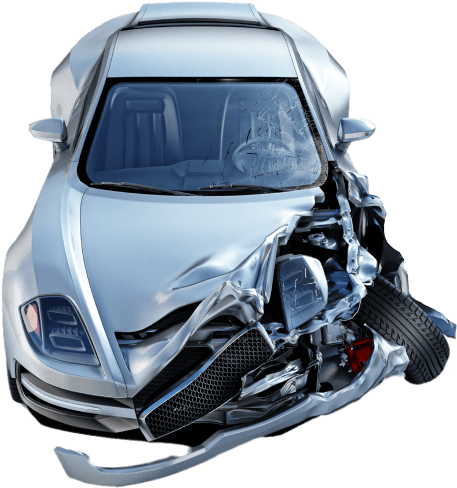Vehicle Diminished Value Claim Services
You May be Able to File a Diminished Value Claim if the Following Applies to Your Vehicle.
See If You Qualify For A Diminished Car Value Claim
- It is less than ten years old and has under 100,000 miles.
- Does not have a previous accident history, or if it was in an accident before, the previous damage was minor.
- You own the vehicle, and it’s not leased (loan payments/financing is fine)
- Another driver was at-fault for the accident.

Your Diminished Value Loss Could Be Massive.
A potential reason is that buyers cannot pay what you’re asking. They can simply walk away and find a vehicle like yours without an accident history.
Because you’re facing a substantial loss, you need to act quickly to ensure that you recover your lost value.
The best course of action is to obtain an appraisal of your diminished value and file a diminished value claim.

What is an Example of a Diminished Value Claim?
Let’s say you own a one-year-old luxury car that was involved in an accident caused by another driver. Despite having the vehicle repaired professionally, you file a claim due to the potential decrease in its market value.
To support your claim, you obtain an appraisal from a reputable auto appraiser who assesses the diminished value of your car. They consider factors such as its make, model, mileage, and extent of the previous damage. The appraiser determines that the car’s diminished value is $5,000.
You then submit a claim to the at-fault driver’s insurance company, the appraisal report, and any supporting documents. For example, repair records and photographs of the damage. In your claim, you state that you are seeking $5,000 as compensation for the diminished value of your vehicle.
The insurance company reviews your claim and the supporting evidence you provided. After considering the facts and assessing the validity of your claim, they agree to compensate you for the diminished value. You will receive a settlement check for the requested amount of $5,000.
This example serves as a representation of a possible outcome of filing a claim.
Helping Customers Nationwide
Recover Diminished Value
Personalized expert guidance until your claim is settled
Licensed and certified auto appraisers with decades of experience
A risk-free experience with a money-back guarantee. We'll ensure you’ll recover more than the cost of the appraisal report fee
Frequently Asked Questions About Diminished Value Appraisal Claims
If you’re like most people, you probably have questions about how it works. Learn how to file a claim and maximize your diminished value settlement!
A diminished value is the difference between a vehicle’s market value before an accident and its value after repairs. Diminished value differs from the usual car depreciation rate as the vehicle ages and gradually loses value. Diminished value is an additional form of depreciation resulting from the damage history.
Use the following checklist to help determine if you qualify. You may be able to file a claim if the following applies.
- Vehicle is newer with low mileage (typically less than seven years old with under 100,000 miles)
- Vehicle was in good condition before the accident
- Vehicle does not have a previous accident history, or if it was in an accident, the previous damage was minor
- Another driver was at-fault for the accident
- The vehicle is not leased
You should prove your claim if you’ve been in a car accident. Most people will turn to car dealers and licensed auto appraisers for documentation. Getting documentation through car dealers can be good supplemental evidence.
However, it’s not the kind of documentation you want as your claim’s foundation. Prove your claim by getting a diminished value appraisal. Ensure the appraiser is licensed and experienced in this area.
An independent appraiser is disinterested in the outcome of your claim. They make unbiased decision-making and don’t profit by selling your vehicle. They can also be a valuable expert witness if you ever need to take legal action.
Proving a claim is a serious business; not all diminished value appraisal reports are created equal. Many poor-quality appraisals contain unsupported opinions or automated software reports offered for sale online.
An auto insurer seeks a high-quality, independent appraisal performed by an industry expert with the highest qualifications and experience. They want appraisals that contain market data and facts.
That’s exactly what you can expect from a DVGOAT appraisal. The car insurance company will see a report created by a licensed appraiser loaded with credentials. An appraisal that contains real market data and facts to support your claim.
Our team will guide you through the claim process. We’ll help you overcome the insurance company’s defenses and help you build up your documentation successfully.
Pick the wrong appraisal company or submit the incorrect documentation, and you could be in for a long, drawn-out process.
Most claims will take two to six weeks to settle. Some claims will settle even quicker.
The more you follow up with the insurance company, the quicker the process will go.
If your claim is dragging on and the insurance company isn’t responsive, try filing a complaint with the insurance department. Every state has an insurance department that handles complaints and regulates the insurance industry.
The insurance department can hold them accountable and get them to respond to your claim.
No state laws or insurance regulations specify how to calculate diminished value. The laws only define what you’re legally entitled to collect. Still, they don’t offer specific guidance on calculating diminished value.
In most states, case law defines diminished value in two ways.
The general rule (immediate diminished value/gross diminished value). The difference between its market value immediately before and immediately after the collision (before repairs are made).
The alternative rule is inherent/residual diminished value. This means the difference between a vehicle’s market value before damage and its lower value after repairs have been made.
You can receive compensation for the repair expenses and diminished value if the repaired car is worth less than before the damage.
There are other methods used to calculate diminished value. For example, formulas, algorithms, online diminished value calculators, price guides, car dealers, auction data, and independent diminished value appraisals. To correctly calculate the diminished value, the market for your specific vehicle should be researched and measured. It’s recommended to engage the services of an independent appraisal company that specializes in diminished value claims.
You can file a claim in most states if the accident wasn’t your fault. You must submit your documentation and demand letter to the at-fault driver’s insurance company.
You have the option to do it via mail or email. The demand letter should specify the diminished value you’re claiming and set a time frame for a response.
You may be wondering when to file a claim. The ideal time is right after you get your vehicle repaired.
Every state has a statute of limitations (amount of time you have to make a claim). In most states, you have at least two years to file a claim. However, it is not recommended to wait until the last minute. Try to file a claim as soon as possible to ensure proper compensation.
Writing a diminished value claim letter involves the following steps:
- Start with your contact information: Begin the letter by providing your name, address, phone number, and email address.
- Date and recipient’s information: Include the current date and the contact details of the insurance company you are addressing. Find the appropriate department or individual to send the letter to.
- Salutation: Begin the letter with a formal greeting, such as “Dear [Insurance Company’s Name]/[Recipient’s Name].”
- Introduction: In the opening paragraph, clearly state that you are submitting a claim for diminished value. Briefly explain the circumstances surrounding the incident. For example, the date of the accident, the parties involved, and any relevant policy or claim numbers.
- Provide a detailed account: In the body of the letter, describe the damages sustained by your vehicle and the repairs performed. Explain that despite the repairs, the value of your car has diminished due to the accident.
- Include supporting evidence: Attach any relevant supporting documents. For example, the repair estimates, invoices, photographs of the damage, and any professional assessments of the vehicle’s diminished value. Refer to these documents within the body of your letter to provide additional credibility to your claim.
- Specify the compensation sought: Clearly state the compensation you seek for the diminished value of your vehicle. Explain how you arrived at this figure, referencing any appraisals or evaluations you have obtained to determine the diminished value amount.
- Request a response: Close the letter by requesting a written response from the recipient within a specific timeframe. Provide your preferred contact method (email, phone number) for them to reach you.
- Closing and signature: End the letter with a polite closing, such as “Sincerely” or “Best regards.” Sign the letter with your full name and include any additional contact information.
- Proofread and send: Before sending the letter, carefully review it for clarity, grammar, and spelling errors. Make sure you have included all the necessary documents and information. Send the letter via certified mail or another trackable method to ensure it reaches the intended recipient.
If your diminished value claim is denied or you receive a low offer, you’ll first want to negotiate.
When you receive a low offer, you should make a counteroffer. Sometimes by coming down on your initial demand, the insurance company will increase their offer as a gesture of good faith.
Haggle and negotiate until they get firm with their offer. At that point, you’re most likely at the top end of their settlement range.
If the offer is too low or your claim is still being denied, you must take legal action. Most of the time, you can take the at-fault driver to small claims court. Let the judge decide what is fair, and then the insurance company will owe you whatever the judge awards you.
Types of Diminished Value
The difference in market value before being involved in an accident and immediately after the loss (before repairs).
For example, a vehicle was worth $25,000 before the accident. Now, the car it’s worth only $7,000 in its damaged state, as it has not been repaired yet.
$25,000 – $7,000 = $18,000 Immediate diminished value
Most people will end up repairing their vehicle after an accident. Therefore, immediate diminished value is not a common claim that is made.
The difference between a vehicle’s market value before the harm and its lesser value after the repairs have been made. Inherent diminished value is a result of the accident/damage history. Repairs can restore a portion of a damaged vehicle’s lost value but not all of it.
Despite the repairs, the vehicle’s value remains less than before the damage occurred. This is the most common type of diminished value. It’s also the type of diminished value that an insurance company will compensate you for.
For example, a vehicle was worth $30,000 just before being damaged. After being repaired, the car is worth $24,000.
$30,000 – $24,000 = $6,000 Inherent Diminished Value
Even with high-quality repairs, potential buyers are unwilling to pay as much for a car that has been previously damaged.
Loss in market value due to substandard collision repairs. This may include mismatched paint or misaligned body panels where the gaps are noticeably off.
Repair-related diminished value is usually the responsibility of the repair facility and is the result of poor workmanship. Due to the repair shop’s mistake, it is not something that an insurance company would typically cover when filing a claim.
Claims by State
Your car's diminished value may be recoverable by filing a claim. These claims are intended to compensate you for your vehicle's diminution in value because of the accident.
To learn about filing a claim in your state, please select your state below.


